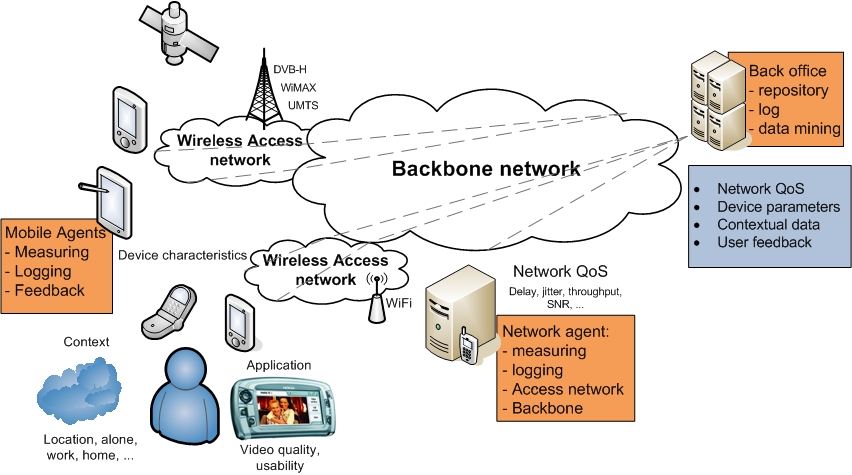Quality of Experience
Introduction
Mobile applications running on handheld devices with wireless capabilities are becoming increasingly important. At the same time, the penetration of mobile phones into the market is very large with more than 5 billion global mobile connections. As a result, there exists intense competition among different technology companies which also release their own mobile operating systems (e.g. Symbian, Android, iOS, Blackberry, etc.). Due to the large amount of released applications with similar purposes, the success of a specific application over another one will depend not only on technical requirements but also – and even to a larger extent - on the appreciation of the (use of the) application by the user, on his or her satisfaction and subjective experience.

Concept
- Develop a methodology in order to bridge the gap between Quality of Service and Quality of Experience taking into account
- Objective, technical aspects
- Contextual data
- Physiological data
- Subjective, user-related dimensions
- Evaluation of
- Standarized measures
- New measurement approaches
- Definition of elements of QoE as an umbrella term
- Usage context
- Expectations
- Previous experiences
- Network conditions
- ...
- Evaluation of measurements on different applications
- Mobile video applications
- Augmented reality applications
- Mobile games
- Mobile VoIP
- ...
Method
- Interdisciplinary measurement and modeling in a Living Lab environment
- “Bring the lab to the people”
- Draw on real people’s experiences
- Multi-dimensional QoE prediction model
- Objective parameters
- Subjective parameters
Measurement Setup
- Re-usable mobile tool for the monitoring assessing QoE of mobile applications
- The mobile tool is the central component of the system architecture
- Android Development
